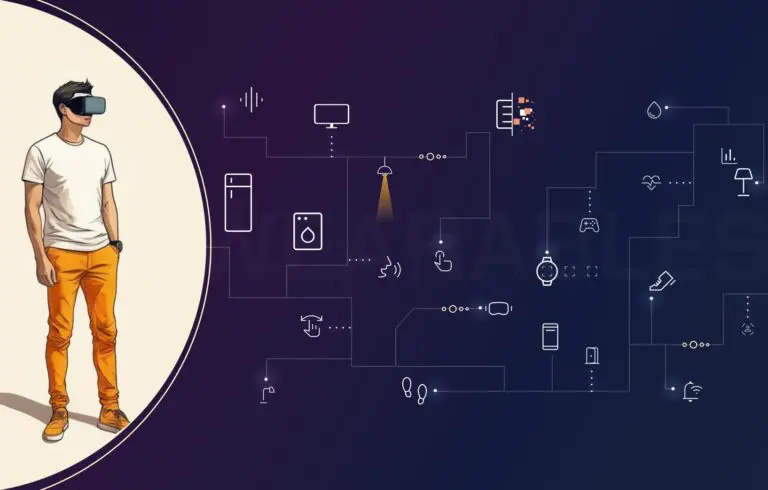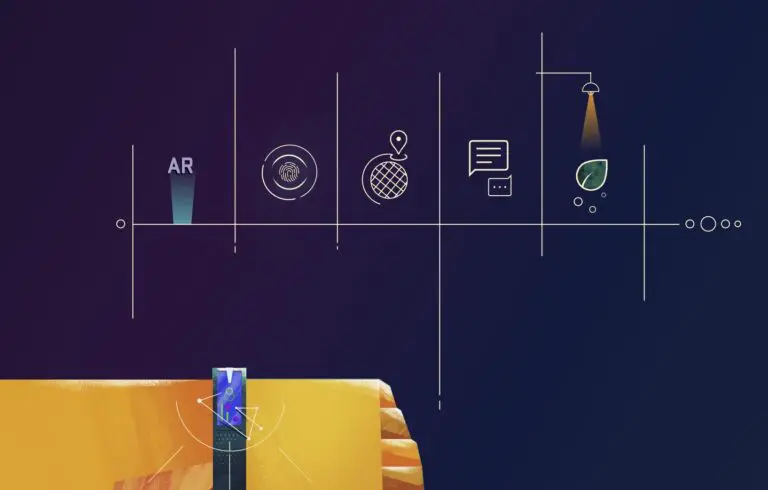Wearable technology has been on the rise, with users turning to gadgets that double as accessories. In this dynamic intersection of fashion and technology, wearables have, thus, emerged as transformative companions in our daily lives, offering a seamless integration of style and function.
Stuti Mazumdar & Vidhi Tiwari - May 2024

As these wearable devices continue to redefine the way we interact with digital information on the go, the design philosophy behind the technology becomes paramount. A comprehensive understanding of user behavior and needs, awareness of diverse form factors, and commitment to seamlessly blend aesthetics with innovation become the key ingredients to a well-crafted and exceptional wearable experience.
In this exploration of designing for wearable devices, we will delve into the principles that can help a designer create seamless and enriching user experiences for wearable devices globally.
1. Understand User Behavior
Begin by gaining a deep understanding of your target audience and their behaviors. Consider the context in which users will interact with your wearable device—in the case of fitness trackers, they will use it while working out, in the case of health trackers, a patient might use it to track their vitals, or they might use it during their daily commute to make the use of their mobile apps easy. This knowledge will help shape your design decisions and help create a product that seamlessly fits into users’ lifestyles.
2. Effortless Integration Into Daily Life

The core of wearable technology is its ability to seamlessly integrate with daily life. Hence, when designing for wearable devices, it is essential to craft an experience that allows users to transition between activities smoothly, just as they jump between tasks in their daily life.
3. Prioritize Functionality
The fundamental aspect of wearable technology is its ability to thrive on its ability to simplify tasks and enhance efficiency. Users often gravitate toward wearable gadgets that prioritize essential functionalities to avoid overwhelming users with unnecessary features. A focused and intuitive design ensures that users can effortlessly navigate their wearable devices, making them more likely to embrace and rely on them daily.
4. Optimize for Different Form Factors
Wearable devices come in various shapes and sizes. They range from smartwatches to smaller fitness trackers to augmented reality glasses. To ensure consistent user experiences, designers and developers should inform themselves of the form factors of different gadgets.
Preexisting knowledge on the hardware constraints the developers might face when implementing your designs can come handy when you are working hard at crafting a comfortable and visually appealing user interface. Hence, consider the limitations and opportunities presented with each type of wearable to ensure functionality and aesthetics.
5. Consider Battery Life
Wearable technology is an accessory for the majority of its user pool. This cohort of users, thus, require a long lasting battery life. Consider implementing low-power methodologies in various points of the user journeys to ensure optimal user experiences.
6. Seamless Integration with the Ecosystem
Designing for wearable devices involves creating a seamless connection with other devices and platforms within the user’s ecosystem. Know that more than often, people wear wearable technology for critical reasons such as health monitoring and analysis. In such cases, seamless integration with smartphones, healthcare systems, and other smart devices is essential. This connectivity enhances the overall user experience and contributes to the wearability of the device you create.
7. Prioritize UI Efficiency
Given the limited screen real estate on wearable devices, optimizing the user interfaces is crucial. It is ideal to, thus, keep the UI elements simple, intuitive, and easy to view. In such cases, the use of gestures, voice commands, and haptic feedback to enhance interaction without overwhelming users.
8. Increase Glanceability
Wearable devices are always used on the go—users want information delivered to them quick and easy as they use the smart watches or trackers on their wrists. Ergo, wearable technology is meant to be glanced at.
Thus, the content and data displayed on an interface should always be accessible and contextual to the user. To ensure the information is always easy to glance, as a rule of thumb, designers must address one idea at a time when creating an interface.
9. Customization for Personalization
Customizable experiences help users feel empowered, especially when it comes to wearable technology. It provides a unique experience to each user as per their preference and needs. Additionally, it fosters a sense of ownership and attachment to the device.
10. Accessibility and Inclusivity
Ensure that your wearable design is accessible to users with different abilities. Consider features like voice commands, adjustable text sizes, and color contrasts. Prioritize inclusivity in your design to reach a broader audience and make a positive impact on users with varying needs.
11. Security and Privacy
As wearable devices often handle sensitive personal information, prioritizing robust security measures to protect user information should be a standard practice. Plan the implementation of secure authentication methods and encryption protocols as part of the design process, ensuring privacy protocols are maintained at all times throughout the user experience.
Additionally, clearly communicating about the privacy features and protocols implemented helps foster trust in your product.
12. Design an Offline Mode
Users may find themselves in a situation where connectivity with a smart device is not possible, such as an unstable network connection. In such cases, to avoid a broken user experience, consider designing offline functionality. Allow users to use the device on an offline mode and provide a provision to sync their data once a connection is established.
13. Account for Style
Unlike traditional tech gadgets, wearable devices are an extension of personal style. It’s an aspect users consider when they purchase a wearable device.
Hence, invest in aesthetics that align with current fashion trends and offer a range of design options to cater to diverse tastes. Collaborations with fashion brands can elevate the visual appeal of wearables, making them desirable accessories as well as functional devices.
14. Augment the Experience
Wearables are just an extension of the mobile apps used by the audience daily. Designers should ensure that wearable devices should reflect a part of the apps, displaying limited functionality to avoid overloading users.
Do away with the pressure of having to cram all the apps’ features into the wearable device and augment the user experience that they are looking for.
15. Continuous User Testing
The design process doesn’t end with the product launch. Since wearable technology is so closely linked to the users’ daily lives, it gives us an opportunity to iteratively improve the user experiences crafted.
Encourage user feedback and actively seek ways to improve the user journeys through updates and enhancements. A responsive approach to user input ensures that your wearable design evolves to meet the changing needs and expectations of your audience.
The Future Of Wearable Technology

The future of wearable technology promises exciting trends poised to further revolutionize how users engage with digital experiences.
With Augmented reality (AR) already becoming a driving force, seamlessly integrating the virtual and physical worlds, we are witnessing great advances in the realm of digital healthcare as we move away from simple fitness trackers and monitoring systems. Some other areas of advancements include enhanced navigation, real-time information feeds, and media consumption as well as delivery.
Furthermore, the rise of eco-conscious design will see sustainable materials and energy-efficient features becoming standard, aligning wearable devices with the growing demand for environmentally friendly technology.
As the wearables landscape continues to unfold, it’s evident that the future holds an enticing blend of innovation, personalization, and seamless integration into the fabric of our daily lives.




